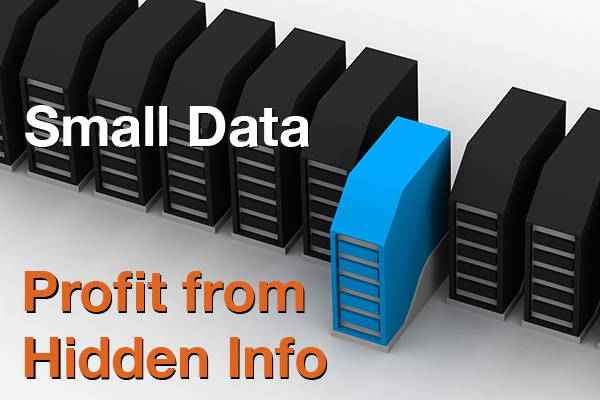Small Data: Finding the “real” customer
“Big Data” is all the rage–information of extreme size, diversity and complexity used to predict consumer behavior, weather and more. It’s exciting, but not very relevant to the typical business owner.
So what about “Small Data”? It’s the information available to most businesses in your ERP, production planning, CRM or other systems you use today.
The previous post discussed how data is hidden in the first place, and how a manufacturer found information that helped them find $300K in bottom line savings.
Will the “real” customer please stand up
Today’s example is an industrial products manufacturer. They deal with three types of “customers”: Original Equipment Manufacturers (OEM), End Users, and Distributors.
OEMs build machines or other sophisticated equipment using the industrial product as a component. An end user company buys the machine from the OEM and uses it to do what they do. Think of a bottling company buying a labeling machine. Inside the labeling machine is the part from the industrial product manufacturer. If that part ever breaks, the bottler will need a replacement.
The third type of customer is the industrial distributor. Both OEM and end user companies buy from industrial distributors to simplify the process of buying parts from many different suppliers. There are very large distributors with offices across the USA and Canada and many smaller regional ones. When an OEM or end user customer buys through a distributor, it “hides” the actual end customer name. The purchase becomes just a part number through yet another distributor branch office. Standard reports at the product manufacturer will show the distributor name and address, not the “real” customer.
Over the years distributors add new branch offices, change addresses, and switch from local to centralized billing. The result is a mess of addresses with no easy way to figure out who the OEM and end user customers are.
Deep dive
Digging into the ERP data it was possible to pull out purchases made by various distributors, the parts purchased, and where they were shipped. Often the distributor ordered and paid for the parts, but had them shipped directly to the OEM or end user. This new view of the data showed the “real” customer and allowed for the orders to be summarized by individual OEM or end user.
The new information showed clearly that the OEMs are key to driving sales. Two dozen OEMs drove more than 80% of the business–some of whom were largely unknown in the past.
Since finding this “hidden” information, sales initiatives have been put in place to reconnect with these key customers. It has also guided the way to expanded marketing initiatives to target similar OEMs.
Closing thoughts
Two very different companies found that while their systems met day-to-day needs, they had to dig deeper to find strategic answers. Unlocking data inside their business systems was key to increasing profits and driving growth.
